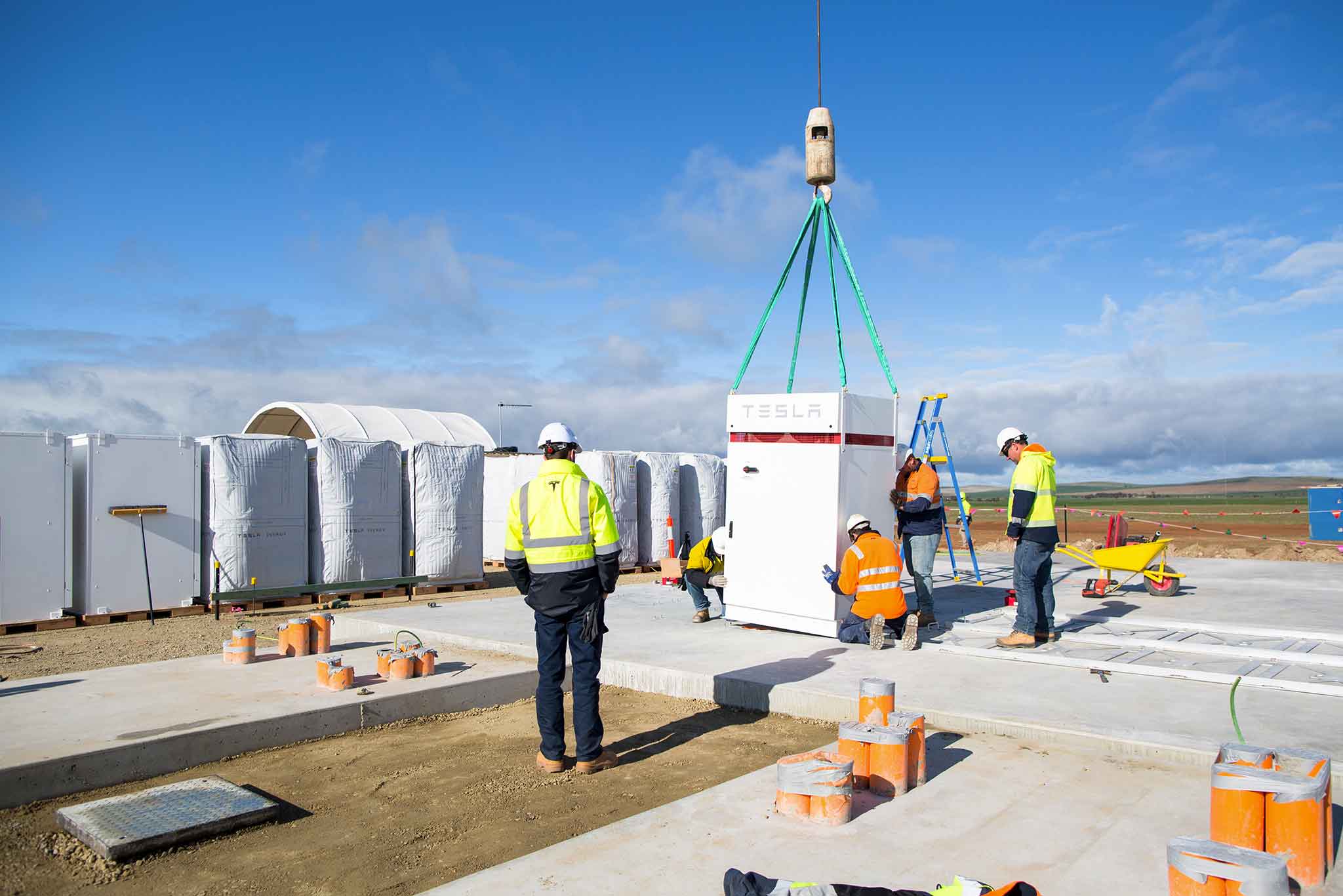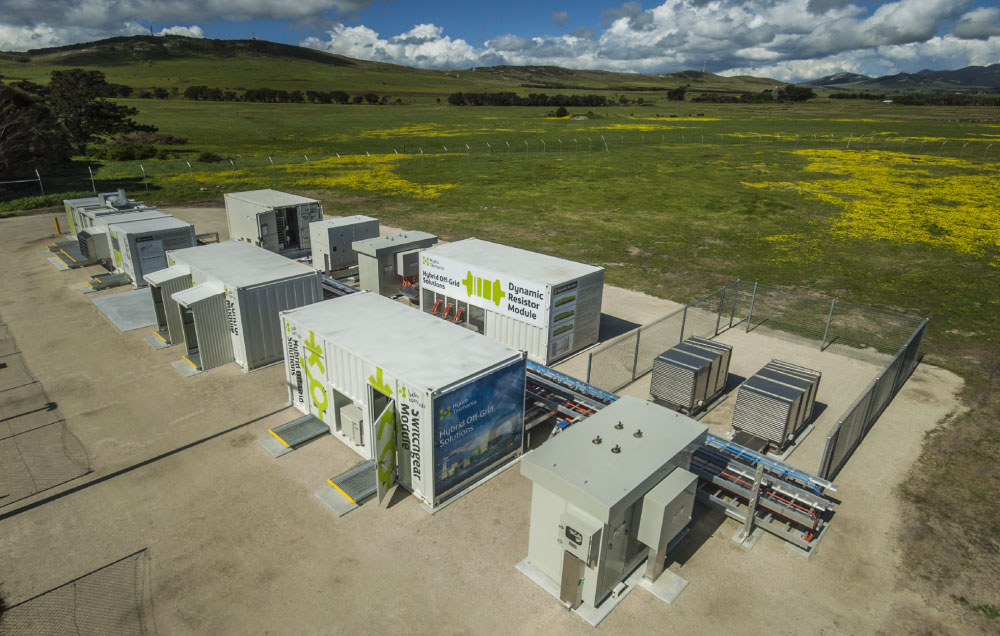Summary
The project aims to use a combination of solar, wind, diesel, storage and enabling technologies to displace more than 60% of Flinders Island’s diesel generated energy. Hydro Tasmania will develop a modular hybrid energy solution with the potential to further drive down costs and move a step closer to delivering a commercially competitive product.
Key results
- The Flinders Island Hybrid Energy Hub project successfully increased targeted levels of annual renewable contribution up to 60%
- The Hub is able to run for periods of continuous zero-diesel operation (up to nearly 100 hours continuously and for approximately 50% of the year)
- The project installed a 200 kW DC solar farm, 900 kW wind turbine, 1.5 MW dynamic resistor, 850 kVA diesel-UPS, 750 kW/266 kWh battery, distribution line augmentation and feeder management system, all integrated into the existing diesel power station
- This was the first demonstrated application of Hydro Tasmania’s enablers-based, zero-diesel-capable systems to fully integrate solar generation as well as wind generation
The project developed and matured workable designs for Hydro Tasmania’s containerised enablers and associated controls including switchgear, diesel-UPS, dynamic resistor and a control system.
This project consists of:
Learn more
Need
Like many remote or island locations, Flinders Island is currently heavily reliant on expensive diesel fuel to supply its electricity needs. Diesel fuel remains the single largest expense in these remote systems and renewable energy can provide a competitive, reliable alternative.
Project innovation
The project involves integration of wind and solar generation with the existing diesel power station and the installation of enabling technology, such as a control system, flywheel, dynamic resistor and battery energy storage.
Development of the Hybrid Energy Hub follows the success of the King Island Renewable Energy Integration Project, which has seen King Island’s energy needs supplied solely from renewables when conditions allow, a world leading breakthrough at the multi megawatt scale.
Hydro Tasmania has worked with Tasmanian manufacturers to develop a series of modular units to house and ship the enabling technologies essential to the energy solution.
Equipment will be fabricated and tested off-site, ensuring a speedy rollout at the final location, reducing the risk, cost and duration of construction.
These modular units could provide a lower cost and scalable solution that will allow easy and rapid transport and installation for renewable energy projects and could also serve temporary uses such as in disaster relief or in the mining industry.
Benefit
The project will allow the island to rely less on diesel generation and provide a reliable and stable electricity supply while reducing carbon dioxide emissions.
The project will also increase awareness by other communities with similar off-grid systems how renewable energy sources and enabling technology can provide reliable electricity generation.
The modular units will be tested for the first time under operational conditions, making Flinders Island the demonstration site for this next step in off-grid hybrid system development.









